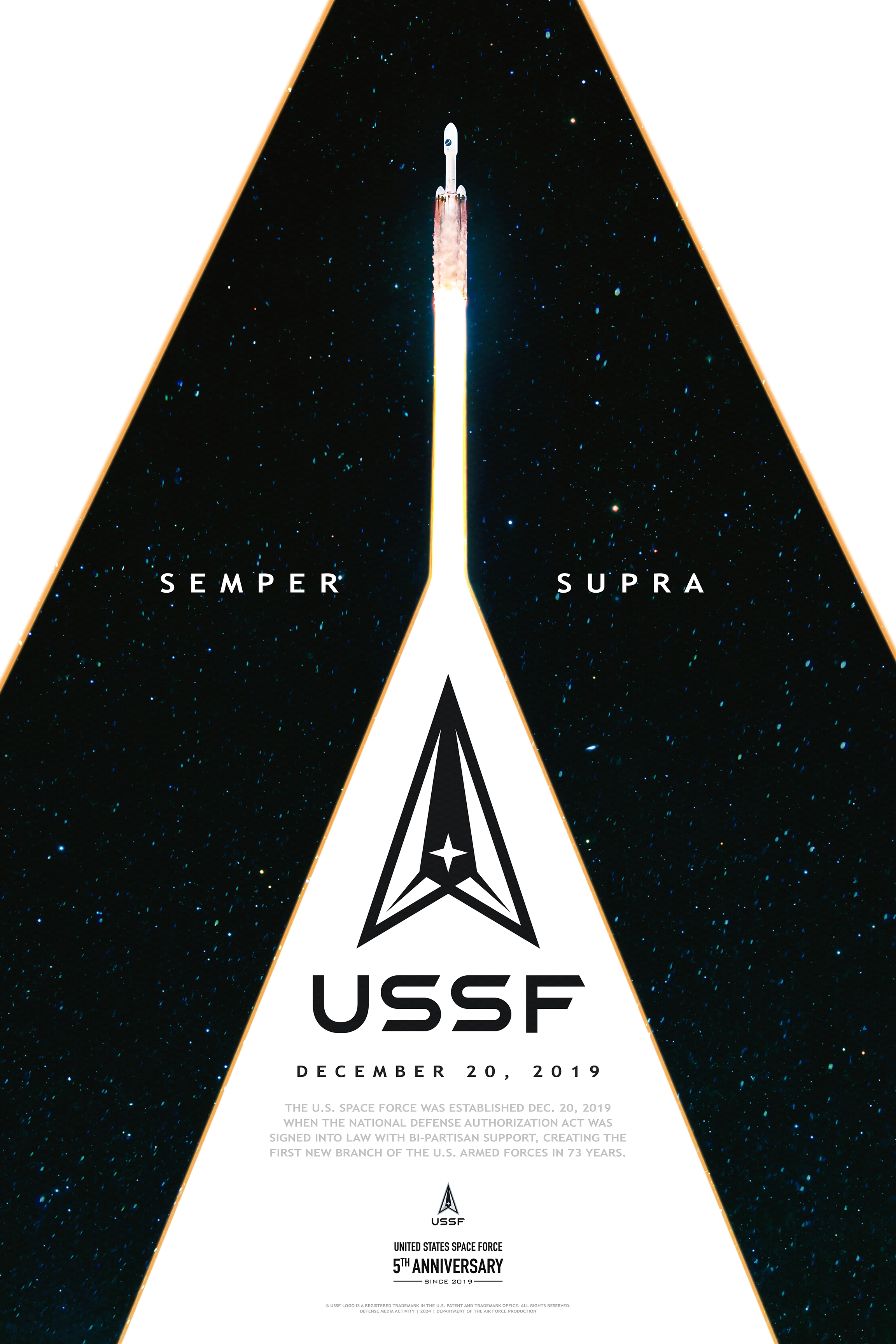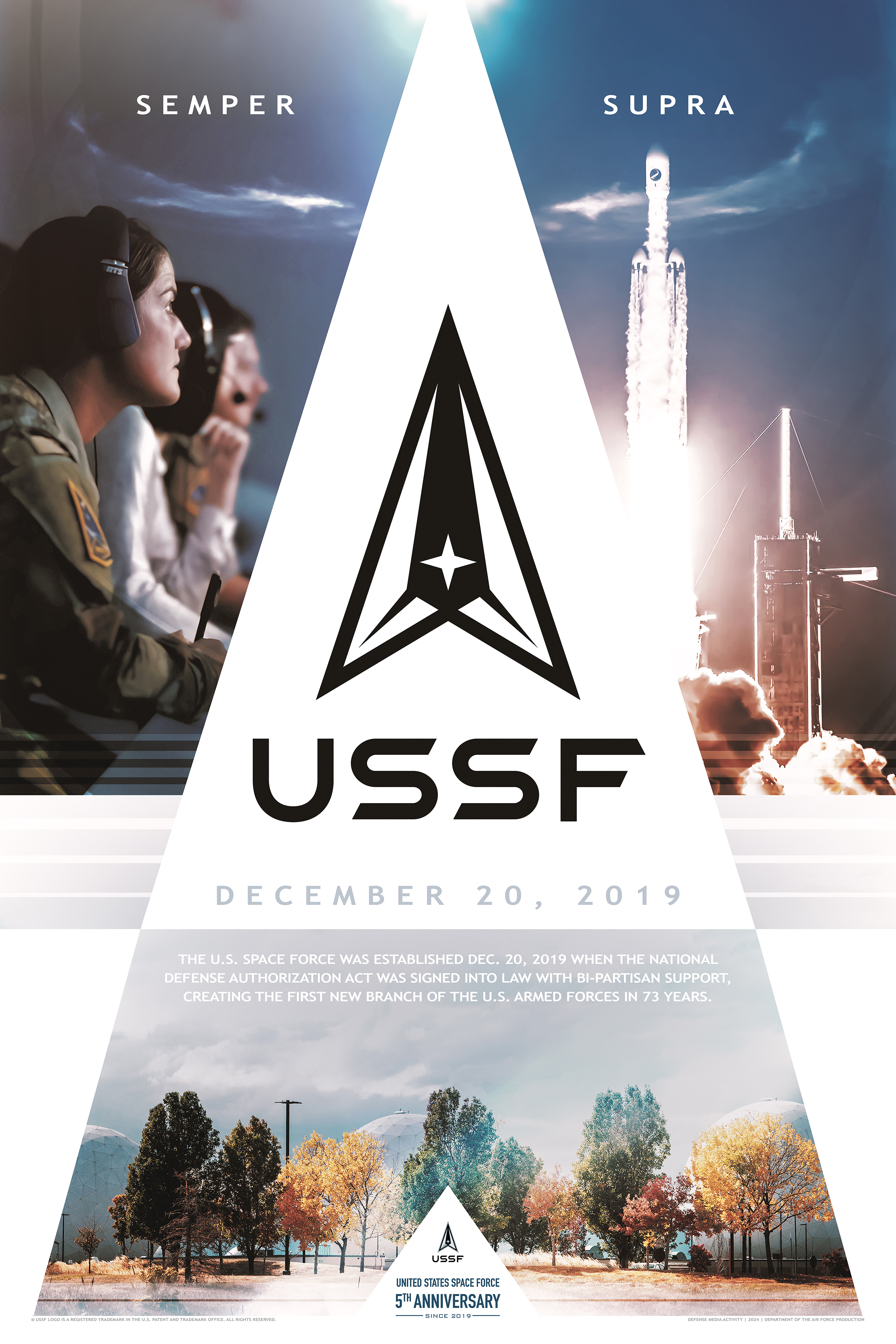ARLINGTON, Va. (AFNS) —
On Dec. 20, 2019, the U.S. Space Force was established, creating the first new branch of the U.S. armed services in 73 years.
The need for a separate, space-oriented branch of service was driven by the quickly evolving space domain, and a growing threat posed by near-peer competitors in space.
For the last 60 years, the United States’ space capabilities have become an essential part of modern life for all Americans, from GPS to satellite communication.
The space domain empowers the U.S. military to be faster, better connected, more informed, precise and lethal because of its investment to strengthen its presence in space.
The origins for operations in space goes back to the U.S. Air Force, Army and Navy’s military space programs created during the start of the Cold War. From the 1950s, the Department of Defense focused on developing space capabilities to support national military objectives, such as surveillance and reconnaissance, communications, and navigation, while simultaneously supporting manned spaceflight programs under NASA.
However, by the mid-1970s, the Air Force managed most of the space systems, but many were fragmented under multiple commands.
To consolidate these space systems, the Air Force established its own operational command to oversee space operations on Sept. 1, 1982. A few years later, this command would be designated Air Force Space Command.
As our nation’s space capabilities increased, they proved their value during Operation Desert Shield and Desert Storm in the early 1990s, which many have named “the first space war.”
Desert Storm marked the first time that space-based capabilities were leveraged to their fullest extent in support of an air and ground campaign. Over the next few decades, space became a growing role in supporting military operations and humanitarian aid and relief efforts.
While the U.S. grew its space enterprise, so did China and Russia’s capabilities in the domain, creating congestion to a once benign area of operations. While the idea of a separate space force had been debated for decades, it was not until 2018 that the highest levels of government began to advocate for a separate force.
In its first year, under the leadership of Chief of Space Operations Gen. John W. “Jay” Raymond and Chief Master Sgt. of the Space Force Roger Towberman, the service focused its sights on building its headquarters and implementing its new organizational structure of field commands, deltas and squadrons.
In 2020 and 2021, the service unveiled its cultural items, such as a seal, its flag, dress uniforms and unique enlisted rank insignias. The first field command, Space Operations Command, was established Oct. 21, 2020, with Space Systems Command and Space Training and Readiness Command following suit in August 2021.
Since its first change of responsibility, naming Gen. Chance Saltzman as the new CSO, the Space Force continued to grow, activating the first of its new component field commands, U.S. Space Forces Indo-Pacific. This milestone was quickly followed by Space Forces Korea, Space Forces Central, Space Forces Europe and Africa and Space Forces Space. These component commands enable joint space operations for each geographic combatant command they are assigned to.
Additional Space Force milestones include the adoption of the branch’s motto, “Semper Supra,” Latin for “Always Above,” and the creation of the Guardian Values: Character, Commitment, Connection and Courage. In 2022, the Space Force unveiled its official song, named after its motto. The song was created to capture the esprit de corps of both current and future Guardians, intended to bring together service members by giving them a sense of pride.
Nearly five years after it was created, the Space Force and its Guardians continue to maintain its mission to “secure our nation’s interest in, from and to space.” While its first few years as a brand-new service were spent “building” and “operationalizing” the service, the Space Force now delivers unmatched space capabilities to the United States.





![]()
source: www.spaceforce.mil